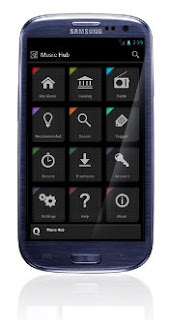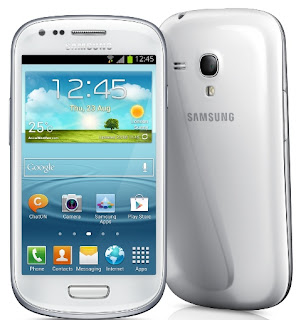Powerful processor, swift performance
S Pen great for navigating device
Excellent camera
Feature rich
Cons
Can be unwieldy, particularly for phone calls
S Note not so useful
Missing multi-window feature for US launch on some carriers
Quick Take:
The Galaxy Note 2 is big and powerful, and a perfect match for power users. Heavy talkers and casual users might want to look elsewhere, however.
The original Galaxy Note was large, odd, and it featured outmoded tech, as pen input had been relegated to the dustbin along with PDAs and dedicated GPS devices. So even Samsung had to be surprised it managed to sell 10 million Galaxy Notes worldwide in 2011 and 2012, perhaps proving that power users crave more productivity features than standard Android and iPhone handsets offer.
At least that's what it appears Samsung learned, as they have cranked the productivity features up to 11 on its successor, the aptly named Samsung Galaxy Note II. The screen is bigger, up from 5.3-inches to 5.55; it's more powerful, complete with a quad-core 1.6GHZ Samsung Exynos processor; the S Pen now supports 1024 points of pressure sensitivity, up from 256 on the previous stick; and there are a ton of Galaxy Note II software features, not to mention Android Jelly Bean 4.1.
The Galaxy Note II is certainly "more" than the Galaxy Note, but is it better? One knock on Samsung is that while its devices are feature-rich, those features often either lack polish or are implemented poorly (see the Samsung Galaxy S III and S Voice). Let's find out in this full Samsung Galaxy Note II review.
Build and Design
The Samsung Galaxy Note II is big, and probably the biggest mainstream smartphone release ever, at least judging by corner-to-corner screen size. It's a phablet, for lack of a better term, that straddles the line between smartphone and tablet -- though it's more the former than the latter.
The device measures 5.95 x 3.17 x .37 inches (HWD), and weighs 6.35 ounces. It's taller than the original Galaxy Note to account for the 0.2-inches of added display, but thinner and lighter too.
As with other recent Galaxy devices, the Note II is heavy on the glossy plastic, which lends itself to the relatively light build, but isn't especially grip friendly. The back plate is removable, allowing users access to the battery, SIM card and SD card slots, and Samsung offers a variety of colorful flip-cover accessories that work well with the design.
In use, the Note II's large size presents a few issues. It's large, thin, and the glossy plastic makes it somewhat hard to grasp effectively for extended phone calls. The flip cover works very well to alleviate that, however, providing added grip. It's surprisingly pocket friendly, though -- at least compared to any other high-end smartphone not named the iPhone or Droid RAZR M, which are both around four inches.
Consider that the Samsung Galaxy S III has a 4.8-inch display, and the benefits of the added screen real estate from the extra .7 inches outweigh any issues from the overall added size, in the pocketability regard at least. Still, I suspect many users will find the Note II unwieldy as a smartphone, particularly those moving up from 3.5- and 4.3-inch devices.

Display
The 5.5-inch display features approximately 267 pixels per inch (1,280 x 720), which is well short of the approximately 320-plus PPI counts featured on many other, smaller, smartphones, and slightly more than the 264 pixels-per-inch found on the 9.7-inch third-generation iPad. It's more than enough, however, and users will be hard pressed to complain about image and video fidelity.
Nor will users complain about contrast and colors, both being Super AMOLED specialties. The Galaxy Note II has very deep blacks and vibrant colors, almost to the point of oversaturation. To that end, Samsung offers color presets in the settings menu, which tone things down a bit.
The display falls short in regards to brightness and the gray/green hue of the whites, which often appear drab, especially when compared to warmer displays that tend to red and orange tones.
Still, its size alone makes it an excellent smartphone for consuming media, principally video, thanks to its cinematic 16:9 aspect ratio. Also, the large display lends itself to excellent onscreen keyboard options, complete with included number rows that otherwise need to be toggled with smaller screens.
Other Buttons and Ports

The large HD Super AMOLED display dominates the front, of course, with a relatively thin bezel, and familiar oblong home button on the bottom edge, in between both "menu" and "back" softkeys
The Samsung S Pen securely docks into the bottom of the device and sits next to the microUSB charging input. There is a headphone jack at the top, the power button on one long side, and a volume rocker on the other.
There is no HDMI input, and users will have the use an MHL-enabled Samsung Smart Adapter to stream content to an HDTV via and HDMI input
Source
















.jpg)























